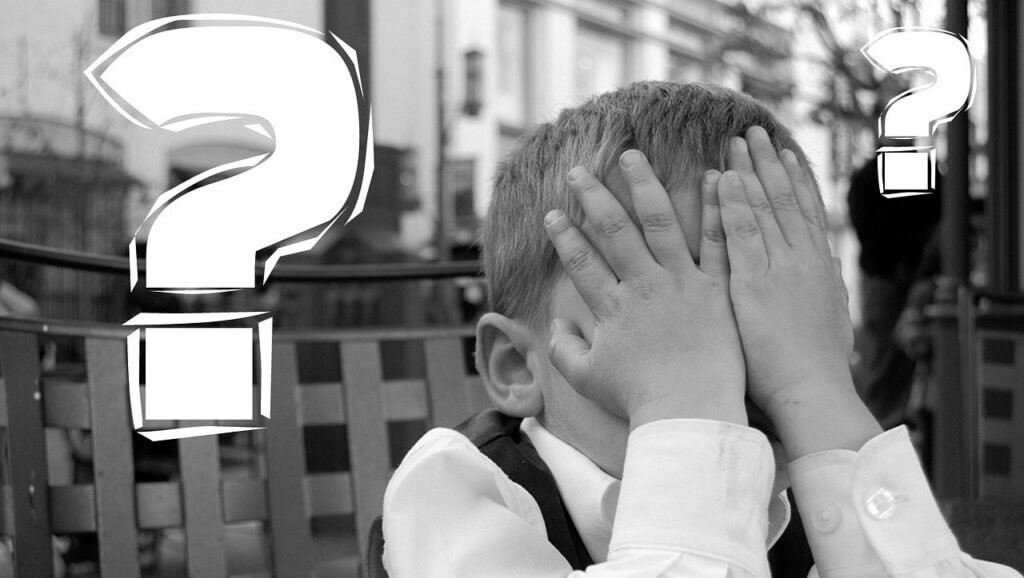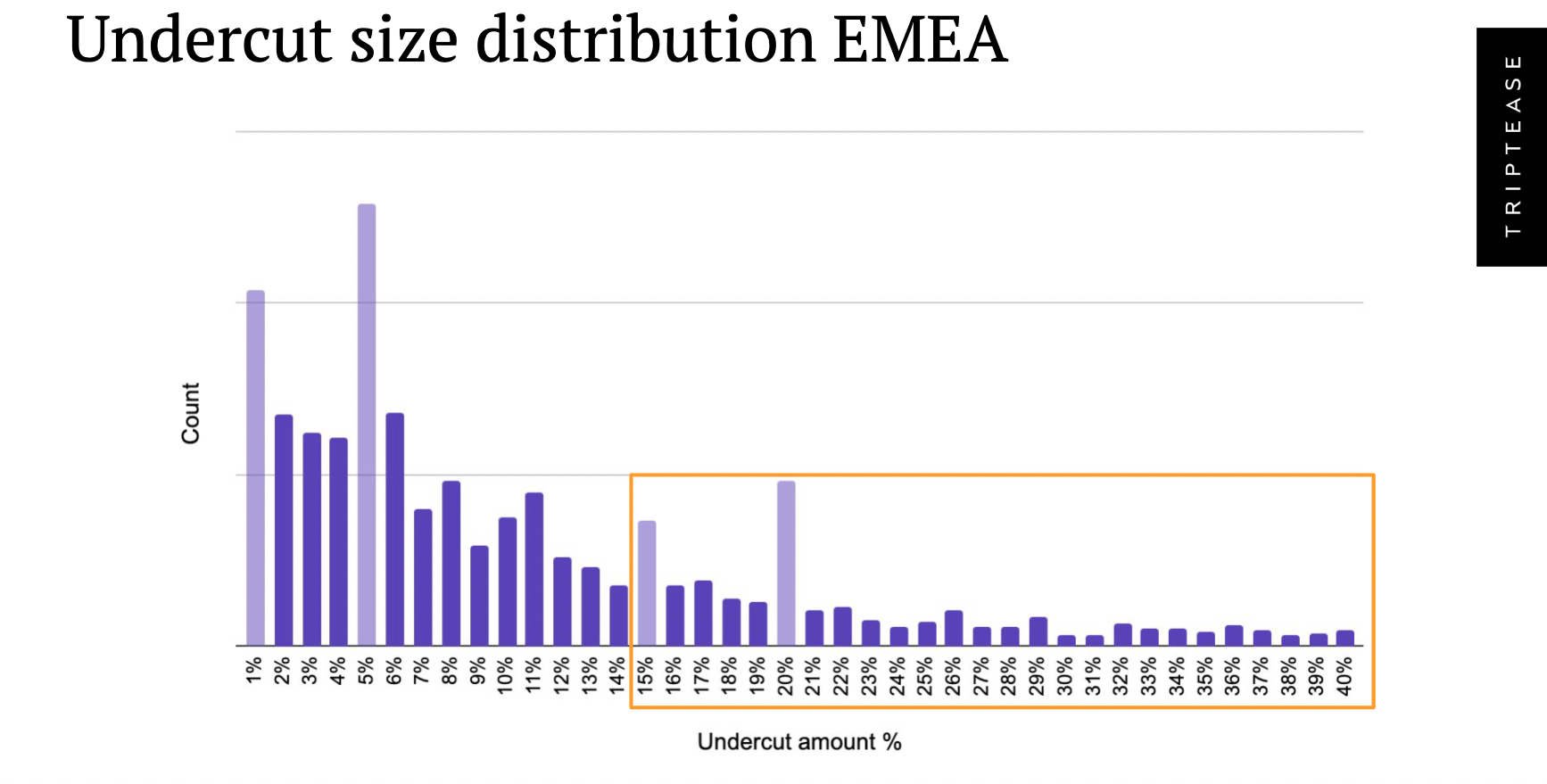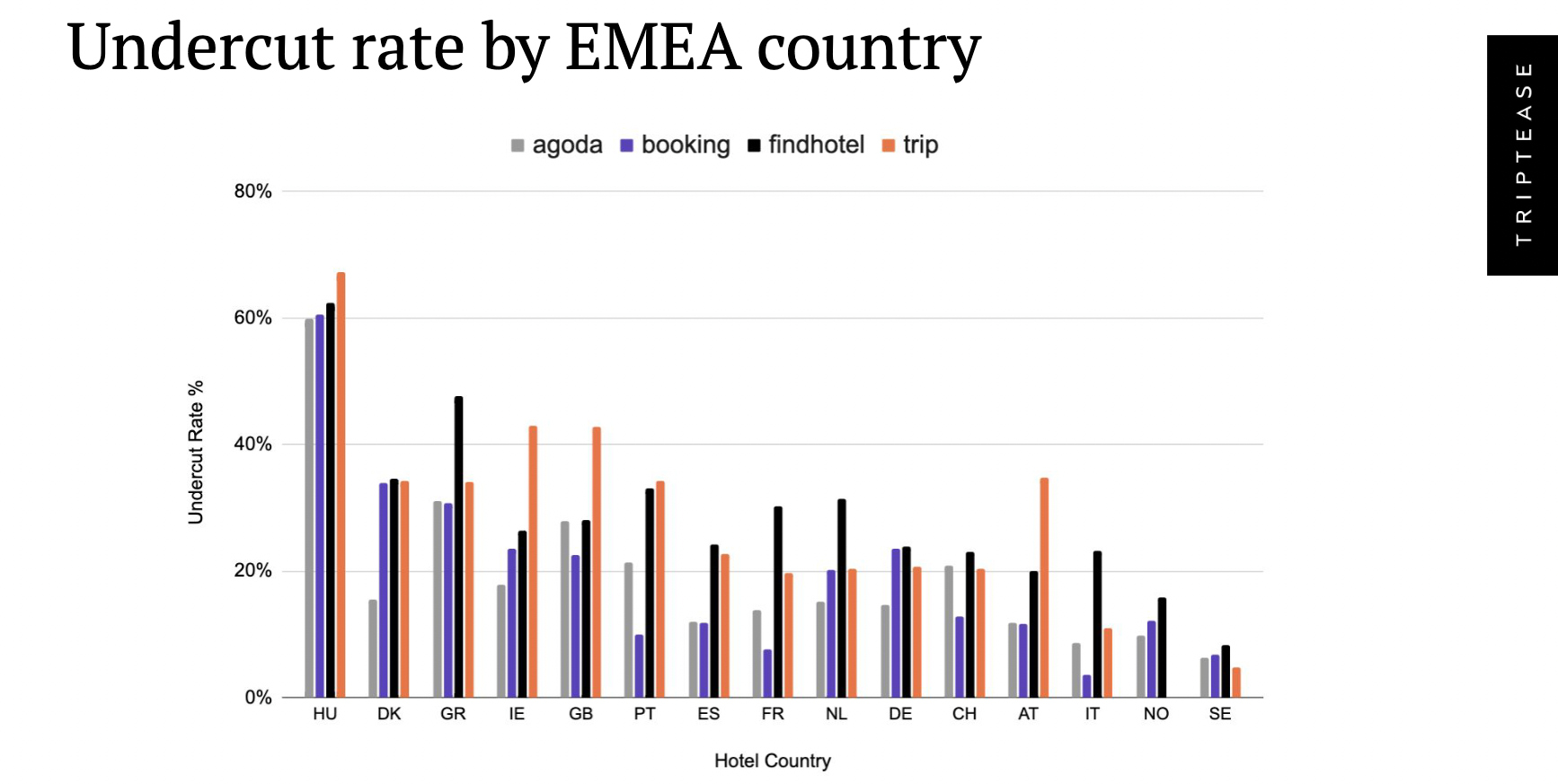
The pandemic has changed the world in many different ways.
NB: This is an article from Mews
People started working from anywhere, which has positively impacted our industry, as they travel to work from places they dreamt of visiting in the past two years. But not all changes were so obviously positive. Throughout the pandemic, OTAs had to think about alternative ways of keeping (a portion) of their revenue.
Subscribe to our weekly newsletter and stay up to date
At that time, with unprecedented low levels of occupancy it effectively meant they had to find more money from the few bookings that were left. Either from the guests or from hotels. Spoiler alert: they did both.
So what exactly have they done and how is that affecting hospitality businesses? What’s their impact now that the industry has largely recovered, running on high occupancy with incredibly high rates?
1. Undercutting
We’ve seen this trend even before the pandemic, but not as strong as it is today. It’s even more visible as now everyone is looking into their costs in a much more forensic way. OTAs are now significantly undercutting the prices of hotels and hostels when offering their beds and rooms to guests, effectively breaking the rate parity they demand in their contracts.
Their goal here is quite clear: they want to get guests to book through them, rather than going through the hotel website. If the booking is cheaper on the website of the OTA that you know very well, the motivation to book through the hotel website has just vanished. When the guest is booking, the OTA is literally saying to the guests, “OTA.com pays €x”.
Sounds like a fair deal…?
How OTAs are undercutting hotels
OTAs are obviously not donating the bookings, despite what it may look like from how they market this to the guests. Their goal still is to make money from the bookings. First and foremost, their commissions are high enough to cover the undercut, it just comes with a slightly worse margin. That’s the only risk they are taking. They use a hotel’s own money against the hotel.
Isabell Kunert from Meininger hotels says: “The OTA commission margin decreases, however, the hotel commission is staying the same for the original loaded rate. So the strategy of increasing rates to avoid undercutting doesn’t really make sense.”
On top of that, they have worked incredibly hard to build a conversion machine that pushes the guest to buy some extras on top of the booking, and that’s (partially) where they compensate for the undercut. They offer the guest insurance, car rental, flight tickets, transfers from the airport…
The more the guest buys, the bigger the upside of the OTA and I am very sure that in total sum game, they make much more money on these bookings compared to bookings without any undercut. They really look at the lifetime value of the guest and build trust between them and the guest – if they paid for part of the booking, the guest is more likely to spend more with them.
Looking at data by Triptease, you can see the size of the undercut ranges from 1-40%, with 5% being the most frequent undercut. But it also varies by country and OTA significantly. You need to watch how the OTAs are selling you to be able to tell where your business falls. “This is only possible with a good rate parity tool and loads of manpower, which in the tourism industry is quite rare nowadays,” adds Isabell Kunert from Meininger Hotels.


2. Virtual Credit Cards
In 2019, we published an article talking about PSD2 and the hidden cost of virtual credit cards. Coming out of the pandemic, this topic returns to the spotlight because of the high rates and high occupancy we’re seeing. During the Direct Booking Summit, I was moderating a panel on this topic with Isabell Kunert & Céline Mamane from Meininger Hotels, who see a big impact of the hidden cost of Virtual Credit Cards on their business.




